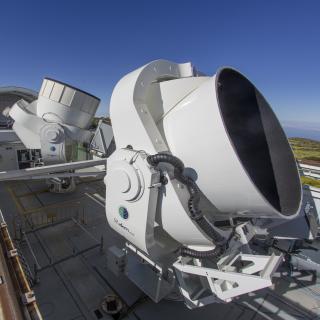Bibcode
Rubiño-Martín, J. A.; Guidi, F.; Génova-Santos, R. T.; Harper, S. E.; Herranz, D.; Hoyland, R. J.; Lasenby, A. N.; Poidevin, F.; Rebolo, R.; Ruiz-Granados, B.; Vansyngel, F.; Vielva, P.; Watson, R. A.; Artal, E.; Ashdown, M.; Barreiro, R. B.; Bilbao-Ahedo, J. D.; Casas, F. J.; Casaponsa, B.; Cepeda-Arroita, R.; de la Hoz, E.; Dickinson, C.; Fernández-Cobos, R.; Fernández-Torreiro, M.; González-González, R.; Hernández-Monteagudo, C.; López-Caniego, M.; López-Caraballo, C.; Martínez-González, E.; Peel, M. W.; Peláez-Santos, A. E.; Perrott, Y.; Piccirillo, L.; Razavi-Ghods, N.; Scott, P.; Titterington, D.; Tramonte, D.; Vignaga, R.
Bibliographical reference
Monthly Notices of the Royal Astronomical Society
Advertised on:
3
2023
Citations
46
Refereed citations
33
Description
We present QUIJOTE intensity and polarization maps in four frequency bands centred around 11, 13, 17, and 19 GHz, and covering approximately 29 000 deg2, including most of the northern sky region. These maps result from 9000 h of observations taken between May 2013 and June 2018 with the first QUIJOTE multifrequency instrument (MFI), and have angular resolutions of around 1°, and sensitivities in polarization within the range 35-40 µK per 1° beam, being a factor ~2-4 worse in intensity. We discuss the data processing pipeline employed, and the basic characteristics of the maps in terms of real space statistics and angular power spectra. A number of validation tests have been applied to characterize the accuracy of the calibration and the residual level of systematic effects, finding a conservative overall calibration uncertainty of 5 per cent. We also discuss flux densities for four bright celestial sources (Tau A, Cas A, Cyg A, and 3C274), which are often used as calibrators at microwave frequencies. The polarization signal in our maps is dominated by synchrotron emission. The distribution of spectral index values between the 11 GHz and WMAP 23 GHz map peaks at β = -3.09 with a standard deviation of 0.14. The measured BB/EE ratio at scales of ℓ = 80 is 0.26 ± 0.07 for a Galactic cut |b| > 10°. We find a positive TE correlation for 11 GHz at large angular scales (ℓ ≲ 50), while the EB and TB signals are consistent with zero in the multipole range 30 ≲ ℓ ≲ 150. The maps discussed in this paper are publicly available.
Related projects

QUIJOTE CMB Experiment (Q-U-I JOint TEnerife CMB Experiment)
QUIJOTE es un programa de dos telescopios y su batería de instrumentos, instalados en el Observatorio del Teide, dedicados fundamentalmente a la caracterización de la polarización del Fondo Cósmico de Microondas, en el rango de frecuencias de 10-42 GHz.
José Alberto
Rubiño Martín

Anisotropy of the Cosmic Microwave Background
The general goal of this project is to determine and characterize the spatial and spectral variations in the temperature and polarisation of the Cosmic Microwave Background in angular scales from several arcminutes to several degrees. The primordial matter density fluctuations which originated the structure in the matter distribution of the present
Rafael
Rebolo López

Cosmology with Large Scale Structure Probes
The Cosmic Microwave Background (CMB) contains the statistical information about the early seeds of the structure formation in our Universe. Its natural counterpart in the local universe is the distribution of galaxies that arises as a result of gravitational growth of those primordial and small density fluctuations. The characterization of the
FRANCISCO SHU
KITAURA JOYANES